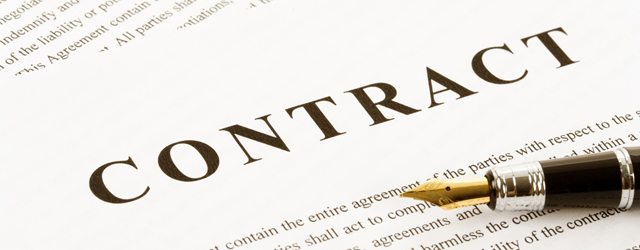Buy Self-help legal documents

This article is focused on New Zealand law and explains issues from a Common law perspective.
How to obtain a trademark within New Zealand
Introduction
If you're starting up a business or your existing NZ company is developing a product or feature that distinguishes your goods or services from other competitors, you should select a brand or brand name and protect it by registering it as a trade mark. To register a trade mark you must apply to the Intellectual Property Office (see below).
The trade mark system is governed by the TRADE MARKS ACT 2002 and the TRADE MARKS REGULATIONS 2003 (SR 2003/187).
What is a trade mark?
A trade mark is often called a "brand" or "brand name". It can be a name, signature, word (including an invented word), label or sign. In some cases it can include the shape of the goods themselves and the shape of the packaging if this can be represented in graphic form. A trade mark can include smells, sounds and containers.
Selecting a trade mark & ensuring you don't infringe an existing trade mark
Selecting a suitable trade mark is one of the most crucial decisions a business can make. You should select a brand name or symbol that is capable of distinguishing its goods and services from the competition.
When choosing a trade mark you should check the public record of registered trade marks to ensure that you do not infringe on another company's mark. You can do this by searching the register of trade marks maintained by the Intellectual Property Office (IPONZ), either at their Lower Hutt office or on their website, or alternatively you can ask IPONZ to carry out the search for you.
How do I apply to register a trade mark?
To register your trade mark, you should follow the steps outlined in the IPONZ trademark pages
You will have to pay a fee with your application. The amount will depend on the number of different classes of goods and services in relation to which you are registering your trade mark. For up-to-date information on fees, check www.iponz.co.nz.
The date from which your trade mark is protected (or from which you will have priority over other applicants for the same mark) will be the date on which the Intellectual Property Office or the Companies Officer receives your application.
Some trade marks cannot be registered, generally because they are not sufficiently distinctive. A trade mark may also be unacceptable because it is, for example, misleading or offensive (for more on this, see "Indigenous marks" below). If the Intellectual Property Office believes that your trade mark is not acceptable, your rights in response will include the right to a hearing before an IPONZ Hearings Officer.
Your application for registration will be advertised, and other parties will have the opportunity to oppose it. If the matter can't be resolved through negotiation, there will be a formal hearing. The Commissioner of Trade Marks will then decide whether or not to accept your application. Either side can appeal this decision to the High Court.
For more information on applying to register a trade mark, see the IPONZ website at www.iponz.co.nz.
Single applications for different classes of goods and services
The trade mark registration system divides up goods and services into different "classes", and trade marks are registered in relation to one or more of these classes. The TRADE MARKS ACT 2002 allows you to make just a single application if you want to register your trade mark in relation to more than one class of goods or services. (Under the previous (1953) Act, by contrast, you had to make a separate application for each class of good or service.)
The application fee will, however, depend on the number of different classes your application relates to: for up-to-date information on fees, check www.iponz.co.nz.
What is the effect of registering a trade mark?
Although you are not required to register your trade mark, it is advisable to do so. When your application to register the trade mark is accepted, your mark will appear on the register of trade marks, and this gives a number of benefits:
- Registration gives you exclusive use of the trade mark for the goods and services that it applies to, and is effective notice to other companies attempting to register similar trade marks. You can take legal action against any unauthorised use of your trade mark.
- Selecting and registering a trade mark at an early stage can be a valuable company asset, as you can sell or licence the trade mark.
- You are also entitled to use the symbol "®" with your mark to indicate that it is a registered trade mark.
The TRADE MARKS ACT 2002 makes it a criminal offence to counterfeit a registered trade mark, or to possess counterfeiting equipment, or to import or sell counterfeit trade mark goods.
Registration in New Zealand does not provide similar protection overseas, and you must apply for protection under the trade mark registration system of the particular country. However, if you make your overseas application within six months of your New Zealand application, this may give you priority over others applying in the same country.
Indigenous marks
A trade mark cannot be registered if it is likely to offend a significant section of the community, including Maori.
A Maori Trade Marks Advisory Committee has been set up to advise the Commissioner of Trade Marks on applications to register trade marks that contain Maori signs, text or imagery.
How long does registration last for?
You must renew the registration of your trade mark after the first 10 years, and then every 10 years after that. You will be notified when your trade mark comes up for renewal.
Losing registration through non-use of your trade mark
If for a continuous period of three years you don't use your trade mark, anyone may apply to have it removed from the register.
(The equivalent period of non-use under the previous Act, the Trade Marks Act 1953, was five years.)
Losing registration through the trade mark becoming a common name
The registration of your trade mark can be revoked if, through your actions or inactivity, your trade mark becomes a common name used by the general public to refer to a particular product or service.
This new rule from the TRADE MARKS ACT 2002 is different from the equivalent rule under the previous Act. Under the 1953 Act, it was only if the trade mark became a common name in "trade use" (as opposed to general public use) that registration could be revoked; so in order to prevent their trade marks becoming a "common name", trade mark owners had only to be concerned to prevent other traders using the trade mark. By contrast the new law places a greater burden on the trade mark owner, as it will be significantly more difficult to take action against the general public to prevent the trade mark becoming a common name in general public use.
Cautionary notes
- An unregistered trade mark enjoys significantly less protection than one that has been registered. There may therefore be much at stake financially if you fail to register your mark.
- Obtaining a registered trade mark can be a lengthy and complex process, and may involve a hearing with the Intellectual Property Office. You should therefore hire a lawyer who is experienced in this area to advice and represent you.
HowToLaw has partnered with JustAnswer.com
Here you may discuss your legal issue with Lawyer specialising in Family, Employment, Immigration, Property, Business, Consumer Protection, Estate Law and more.













